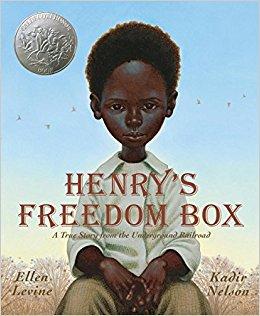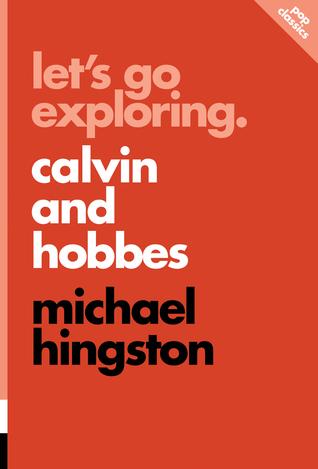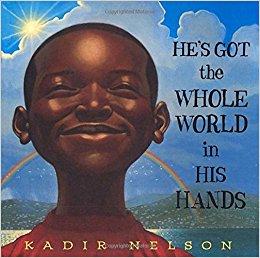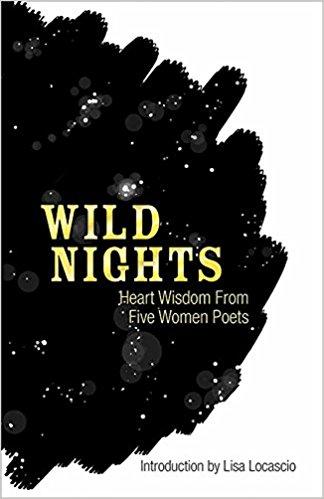
scrounge: /skrounj/ informal verb: to actively seek [books] from any available source

Henry's Freedom Box is the true story of Henry "Box" Brown, an enslaved man who mailed himself to freedom in 1849. This telling of that story is both devastating and triumphant, and as usual, Kadir Nelson's illustrations capture every emotion and event perfectly.
Henry grew up with a master who seemed to treat him well, relatively speaking. But then he was given to his master's son and sent to work in a tobacco factory. After he married and had three children, Henry's wife and children were sold away from him (this scene might be difficult for sensitive readers.)
Henry's method of gaining his freedom leads him into a wooden box which is carried on carts and a boat, and includes some rough handling, but it works. This book did a great job of breathing life into a story I'd heard before only in a vague and generalized sense, and gives the name and details to go with it.
Scrounged From: Our local library
Format: Hardcover
Author: Ellen Levine
Illustrator: Kadir Nelson
Pages: 40
Content Advisory: Henry's wife and children are sold away from him around the middle of the story.

Let's Go Exploring: Calvin and Hobbes was an entertaining and informative book for me since, although I very much enjoy Calvin and Hobbes, I didn't discover it until well after its newspaper run had ended (I didn't learn to read until about halfway through it, and we were overseas for the rest). So while some fans may be well aware of the timeline of the strip, this was all new information to me, so very interesting.
Aside from tracing the evolution of the strip and creator Bill Watterson's career, the author spends some time analyzing what it was about this strip that made it so beloved by nearly everyone, covering major characters and familiar elements -- as he mentions early on, there are "haters" for just about anything, but very rarely for Calvin and Hobbes. This part (the first couple chapters) was enjoyable and can help fans feel a sense of commonality in their appreciation of the strip, without getting bogged down in details or overanalysis.
The final chapter covers the numerous tributes and homages that have continued to try and help fans fill the gap left by Calvin and Hobbes since its end. This was slightly less interesting to me, but at the same time it also ponders the question of why so many felt the need to find closure in the first place, and demonstrates the degreee to which Calvin and Hobbes has become a pop culture icon, even without lucrative licensing.
(Thanks to NetGalley for the review copy.)
Scrounged From: NetGalley
Format: Kindle
Author: Michael Hingston
Pages: 120
Content Advisory: None

The song He's Got the Whole World in His Hands was one of my favorites to sing as a child, but I never knew it was originally a spiritual.
Sometimes it's a nice change (and a lot of fun) to sing a picture book instead of just reading it, especially with small children. Kadir Nelson has created some wonderful images to accompany the song, focusing on a boy and his family as they interact with nature and with each other, creating a vision that reaches from the individual person to the planet as a whole.
Scrounged From: Our local library
Format: Hardcover
Author: Unknown
Illustrator: Kadir Nelson
Pages: 32
Content Advisory: None
Since 1976, the month of February has been designated Black History Month, to celebrate the achievements of African Americans in the United States. While this is an aspect of history that should be celebrated all year long, it can be a great opportunity to find new books that communicate African American biographies and stories to children and adults. To that end, I wanted to point out a few pertinent books that we've already reviewed. I'm also planning to post a new review on each Tuesday and Thursday during the month of February, to highlight a few more books that celebrate black history. Stay tuned!
In the meantime, here are a couple books that we've already reviewed featuring important individuals or events in black history:
The Warmth of Other Suns by Isabel Wilkerson is a well written, thoroughly researched look at the "Great Migration" of blacks from the south to the north and west during the earlier parts of the 20th century. While it's a long book, it doesn't feel long -- the "narrative nonfiction" style draws you in to the movement as a whole as well as the specific individuals whose journeys are featured through the course of the book. Highly recommended.
The Story of Ruby Bridges by Robert Coles is a picture book that tells the story of Ruby Bridges' fight to end school segregation. It's at once inspiring and heartbreaking that she was made to endure harrassment and hate just to get an equal education.
New reviews from this month will be linked below.
He's Got the Whole World in His Hands, Author Unknown, Illustrated by Kadir Nelson
Henry's Freedom Box, by Ellen Levine, Illustrated by Kadir Nelson
The Youngest Marcher, by Cynthia Levinson, Illustrated by Vanessa Brantley Newton
I Love My Hair! by Natasha Anastasia Tarpley, Illustrated by E.B. Lewis
Heart and Soul, by Kadir Nelson

Wild Nights: Heart Wisdom from Five Women Poets is a lovely collection of poetry from some well-known female poets of the recent (and distant) past, including some of my favorites. This collection focuses on feelings, romance, heartbreak, and other things to do with love and life. In order, the poets included here are:
Sappho: I'd heard the name before, but knew nothing of this most famous Greek poet from more than two thousand years ago. While Sappho's "voice" often varies based on the translator, she still speaks and influences poets and readers after all this time. I wasn't able to get into all of her poetry, but still appreciated the opportunity to read and learn some culture.
Emily Dickinson: I have enjoyed Dickinson's poetry since I was first introduced to it. I really like her penchant for using slant rhymes, and for being short and to the point in her writing. Not all of my favorites were included here, but it's always good to read her again.
Amy Lowell: Lowell was a poet I have probably heard of but had not been introduced to yet. I don't tend to enjoy free verse as much as form, but I still found some poems that I enjoyed, especially "Fireworks."
Sara Teasdale: I was introduced to Teasdale's poetry in my poetry writing class in college, and she became one of my favorite poets. This collection included some of my favorites of hers as well as some I hadn't read yet. I love her ability to communicate complicated feelings so clearly, and also the way she often uses aspects of nature to do so.
Edna St. Vincent Millay: As a fellow Mainer, I was familiar with some of her work and glad to read it again. Much of it struck me as more cynical than I'd noticed before, but maybe it was just these particular selections. There is much here about loss of love as well as a general noncommittal attitude at times. But she expresses feelings so beautifully, whether in sonnets or freer forms.
The end includes biographies of the poets (or at least what little is known of them, in the case of Sappho). It was interesting to note how Sappho influenced so many of these poets, and even though their styles are different, their "heart wisdom" is very similar.
(Thanks to NetGalley for the review copy.)
Scrounged From: NetGalley
Format: Kindle
Authors: Sappho, Emily Dickinson, Amy Lowell, Sara Teasdale, and Edna St. Vincent Millay, with Lisa Locascio
Pages: 144
Content Advisory: Some poems are romantic/erotic in nature, but not explicit.


